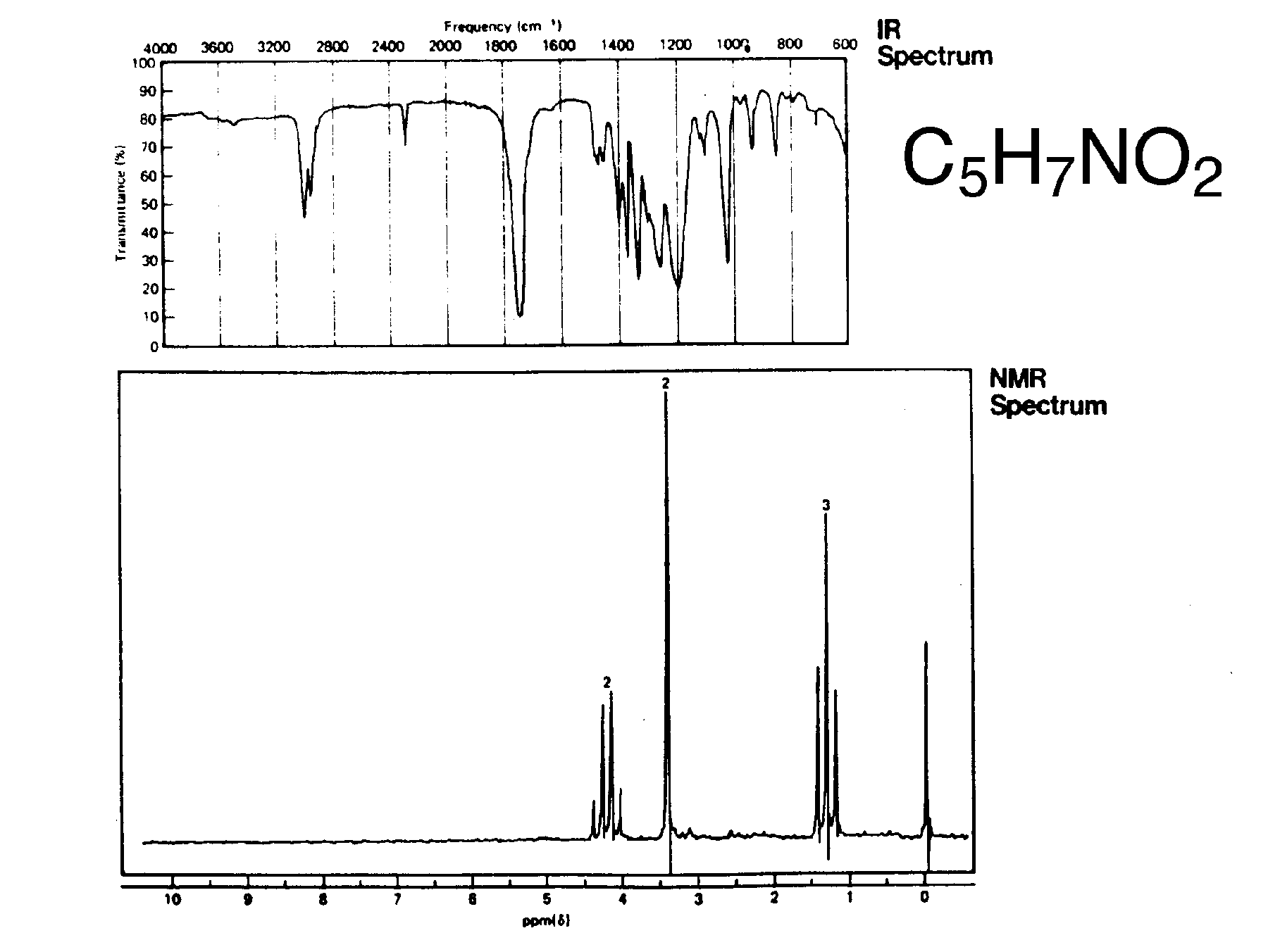Organic Chemistry II |
 |
|
Professor Carl C. Wamser |
||
Chem 335 - Winter 2005 |
Chapter 13 Workshop, part 2 |
![]()
Organic Chemistry II |
 |
|
Professor Carl C. Wamser |
||
Chem 335 - Winter 2005 |
Chapter 13 Workshop, part 2 |
![]()
![]()
1. Compounds A and B have the formula C5H11Cl. Neither A nor B react with NaI in acetone or with NaSCH3 in dimethylsulfoxide with any appreciable rate. B also does not react with NaOCH2CH3 in dimethylsulfoxide at an appreciable rate. In contrast, A reacts with NaOCH2CH3 in dimethylsulfoxide to give compounds C and D, which both have formula C5H10 and IR bands between 1650-1660 cm-1. The 1-H NMR spectra of A and C are tabulated below.
Propose structures for A and D that are consistent with the experimental observations. Assign each of the 1-H NMR resonances to sets of equivalent protons in A and C.
1-H NMR (A)
1.01 ppm 3H triplet
1.51 ppm 6H singlet
1.73 ppm 2H quartet1-H NMR (C)
1.57 ppm 3H doublet
1.60 ppm 3H singlet
1.68 ppm 3H singlet
5.17 ppm 1H quartet
2a. Compound E, C5H9N, exhibits strong absorption in the infrared spectrum at 2252 cm-1 and gives the following 13-C NMR spectrum: 13.2 ppm (q), 16.8 ppm (t), 21.8 ppm (t), 27.4 ppm (t), 119.8 ppm (s).
2b. Compound F, C9H16O4, exhibits strong absorption in the infrared spectrum at 1735 cm-1 and gives the following 1-H NMR spectrum: 0.80 ppm (t, J = 7.1 Hz, rel. area 3), 1.93 ppm (q, J = 7.1 Hz, rel. area 2), 3.71 ppm (s, rel. area 3).
3. An optically active compound G, C6H10, was hydrogenated over a platinum catalyst to give an optically inactive hydrocarbon, C6H12, which was identical to methylcyclopentane. Give the structure of the optically active C6H10 compound and explain why this structure is uniquely consistent with the data.
4. Deduce structures for the unknown compounds based on the spectroscopic data provided.
(clicking on a spectrum brings up a much larger image)

Peer-Led Team Learning: Organic Chemistry, 1/e
Jack A. Kampmeier, University of Rochester
Pratibha Varma-Nelson, St. Xavier University
Donald Wedegaertner, University of the Pacific
Prentice-Hall, 2001, ISBN 0-13-028413-0
http://www.sci.ccny.cuny.edu/~chemwksp/OrganicChem.html